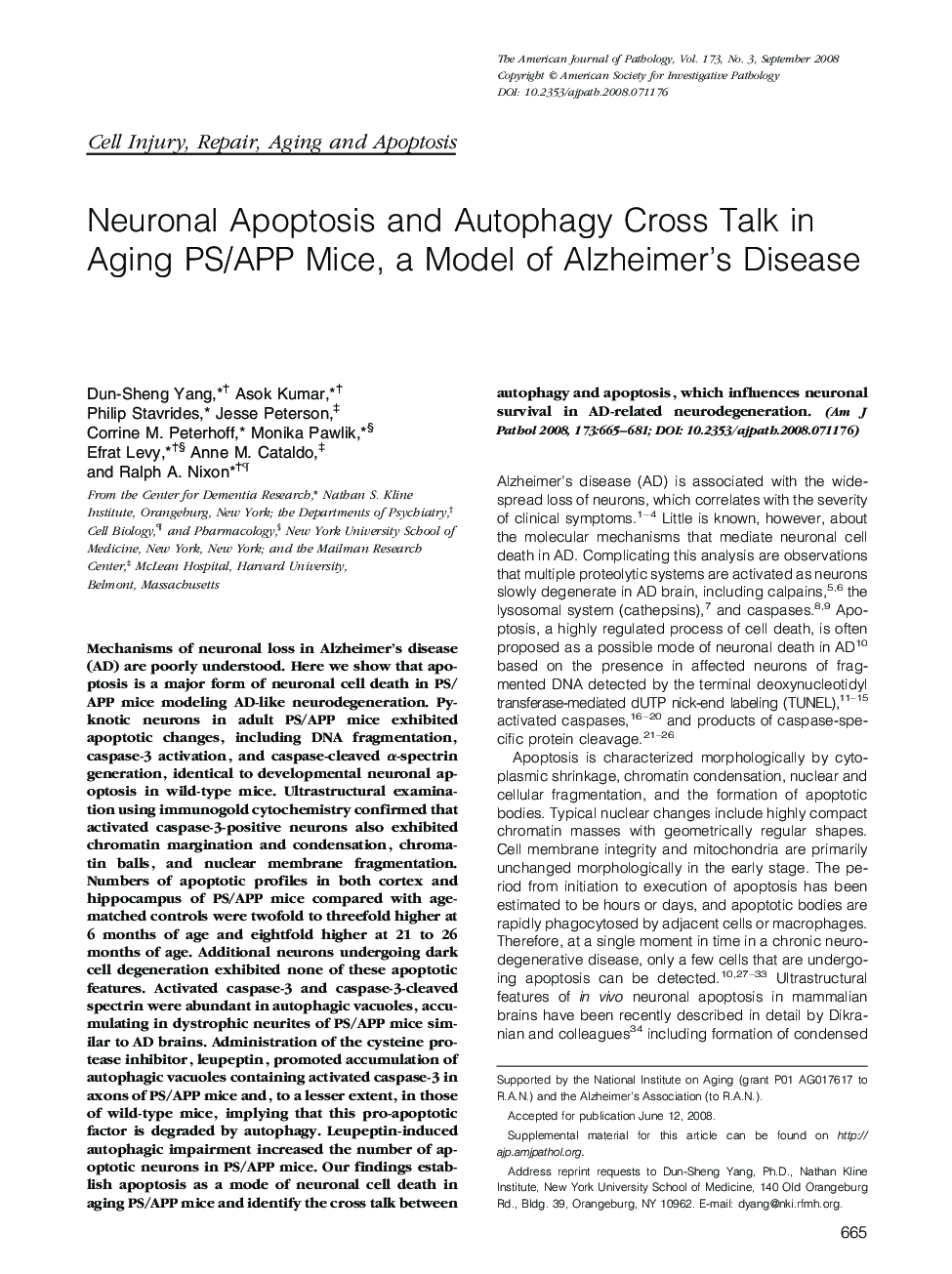| Article ID | Journal | Published Year | Pages | File Type |
|---|---|---|---|---|
| 5938308 | The American Journal of Pathology | 2008 | 17 Pages |
Mechanisms of neuronal loss in Alzheimer's disease (AD) are poorly understood. Here we show that apoptosis is a major form of neuronal cell death in PS/APP mice modeling AD-like neurodegeneration. Pyknotic neurons in adult PS/APP mice exhibited apoptotic changes, including DNA fragmentation, caspase-3 activation, and caspase-cleaved α-spectrin generation, identical to developmental neuronal apoptosis in wild-type mice. Ultrastructural examination using immunogold cytochemistry confirmed that activated caspase-3-positive neurons also exhibited chromatin margination and condensation, chromatin balls, and nuclear membrane fragmentation. Numbers of apoptotic profiles in both cortex and hippocampus of PS/APP mice compared with age-matched controls were twofold to threefold higher at 6 months of age and eightfold higher at 21 to 26 months of age. Additional neurons undergoing dark cell degeneration exhibited none of these apoptotic features. Activated caspase-3 and caspase-3-cleaved spectrin were abundant in autophagic vacuoles, accumulating in dystrophic neurites of PS/APP mice similar to AD brains. Administration of the cysteine protease inhibitor, leupeptin, promoted accumulation of autophagic vacuoles containing activated caspase-3 in axons of PS/APP mice and, to a lesser extent, in those of wild-type mice, implying that this pro-apoptotic factor is degraded by autophagy. Leupeptin-induced autophagic impairment increased the number of apoptotic neurons in PS/APP mice. Our findings establish apoptosis as a mode of neuronal cell death in aging PS/APP mice and identify the cross talk between autophagy and apoptosis, which influences neuronal survival in AD-related neurodegeneration.
